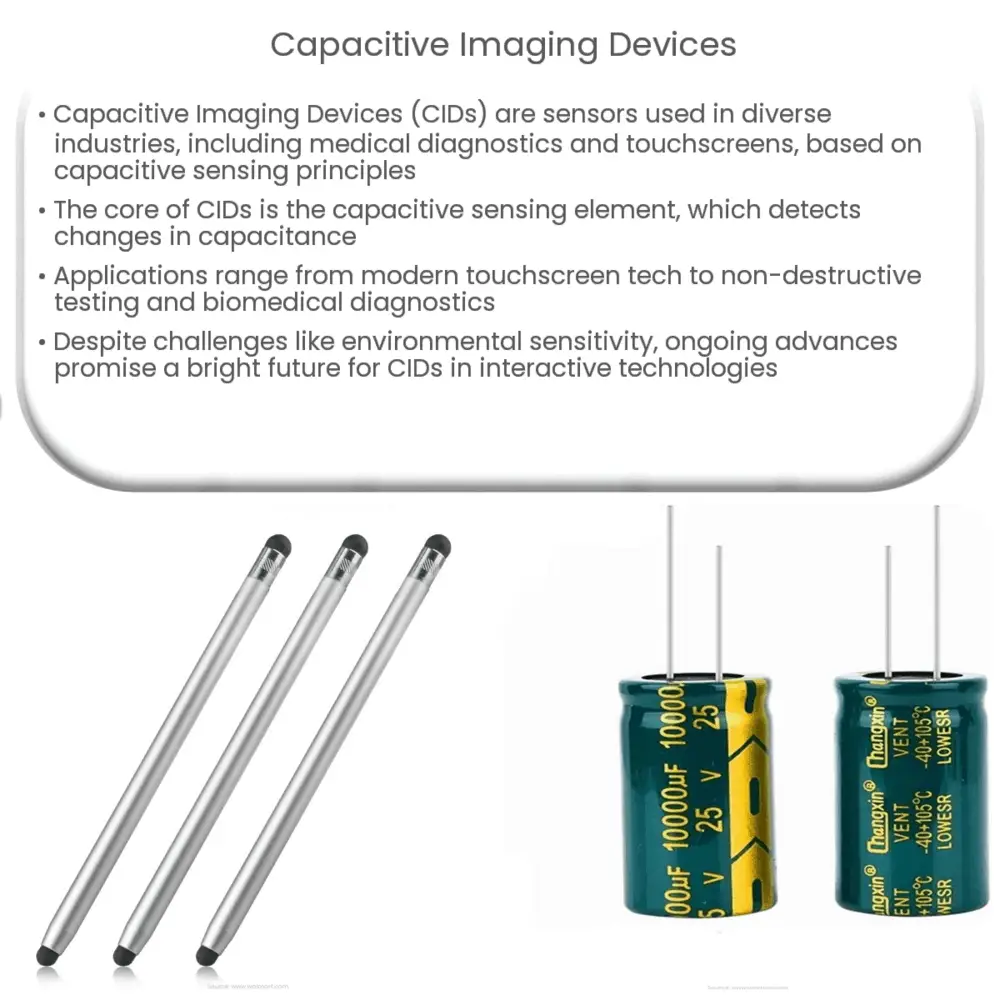Explore the working principles, applications, and future potential of Capacitive Imaging Devices in industries from tech to healthcare.

Introduction to Capacitive Imaging Devices
Capacitive Imaging Devices (CIDs) are a class of sensors that have found extensive use across a broad range of industries, from medical diagnostics and human-machine interaction to non-destructive testing and security applications. These devices work on the principle of capacitive sensing, a technique that measures changes in an electric field to sense proximity or contact with an object or surface.
Working Principle of Capacitive Imaging Devices
The fundamental principle behind capacitive imaging devices lies in the detection of changes in capacitance. Capacitance, the ability of a system to store an electric charge, varies when a conductive or dielectric object comes into proximity or contact with the sensor. CIDs take advantage of this principle by using a capacitive sensing element which, in response to such changes, provides a measurable output.
The Capacitive Sensing Element: This is the key component of a CID. It can take various forms, but typically consists of a pair of conductive plates separated by an insulator or dielectric. When an external object approaches or touches the sensing element, it alters the electric field between the plates, causing a change in capacitance.Electronic Circuitry: This circuitry processes the signal from the sensing element, converting the change in capacitance into a usable form. The electronic circuitry often involves an oscillator, a frequency counter, and an analog-to-digital converter to transform the analog capacitance change into a digital signal.
Applications of Capacitive Imaging Devices
Capacitive Imaging Devices offer a robust, versatile sensing solution, facilitating numerous applications across different industries:
Touchscreens: CIDs are a cornerstone of modern touchscreen technology. They help sense the presence and location of a user’s touch on the screen, allowing for precise input.Non-destructive Testing: In industries such as construction and aerospace, CIDs are used for non-destructive testing. They can detect flaws, cracks, and other defects in materials without damaging them.Biomedical Applications: CIDs are used for imaging and diagnostics in medicine. They can help measure biological phenomena such as heart rate and breathing rate, and they can also be used for imaging tissues and cells.
Despite their wide-ranging applications, CIDs face challenges such as sensitivity to environmental conditions and interference from other devices. Yet, with continuous advancements in technology, researchers are finding ways to overcome these limitations, pushing the boundaries of what’s possible with capacitive imaging technology.
Recent Advances and Future Potential of Capacitive Imaging Devices
With the rapid progress in microelectronics and digital technology, capacitive imaging devices are becoming more sophisticated, enabling higher resolution imaging, improved sensitivity, and faster response times. For example, advancements in microfabrication techniques have led to the development of microelectrode arrays, significantly enhancing the spatial resolution of capacitive sensors. Such improvements have expanded the application scope of CIDs, enabling their use in more complex and demanding environments.
Smart Surfaces: Leveraging the advancements in capacitive technology, smart surfaces are being developed that can detect and respond to touch, pressure, and even gestures. These smart surfaces find applications in intelligent homes, interactive displays, and advanced vehicle control systems.Biomimetic Sensing: Capacitive sensors are used in the development of biomimetic systems, emulating the tactile sensing capabilities of humans and animals. This has significant implications in the field of robotics, where such sensors can aid in the development of robots with sophisticated touch and interaction abilities.Advanced Biomedical Devices: With higher resolution and sensitivity, capacitive sensors are advancing biomedical diagnostics and treatments. They are being integrated into wearable devices to monitor vital signs, and in implants to provide real-time monitoring of physiological parameters.
Conclusion
In conclusion, capacitive imaging devices are a vital piece of technology with a broad range of applications across numerous industries. From enhancing the user experience with touchscreens to enabling non-destructive testing and advancing medical diagnostics, capacitive sensors play a significant role. With continuous advancements in microelectronics and digital technology, these devices are becoming more sophisticated, providing higher resolution, improved sensitivity, and faster response times.
While challenges related to environmental sensitivity and interference persist, ongoing research and development efforts are continually pushing the boundaries of capacitive imaging technology. Looking towards the future, the potential of capacitive imaging devices seems limitless, promising more interactive and responsive technology that can significantly impact our daily lives.

